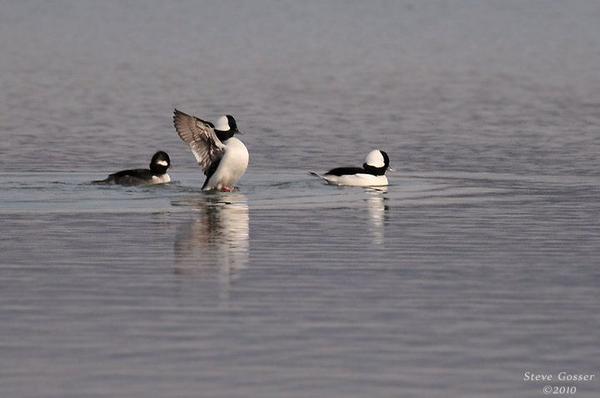
It’s early November, the wind’s from the north, and it’s time for waterfowl. Here are two small ducks who stop in southwestern Pennsylvania on their way south.
Buffleheads and ruddy ducks hang out together in the winter, perhaps because they dive for the same food: aquatic insects and crustaceans (crabs, crayfish, etc). Buffleheads add mollusks to their diet (small mussels, clams, etc). Ruddy ducks add plants and zooplankton.
Buffleheads (Bucephala albeola) are black and white with compact bodies and stubby bills. Only 13.5 inches long, they fly fast and land abruptly. They’re actually the same size as a pied-billed grebe(*) but bufflehead males look larger because their round white-topped heads stand out.
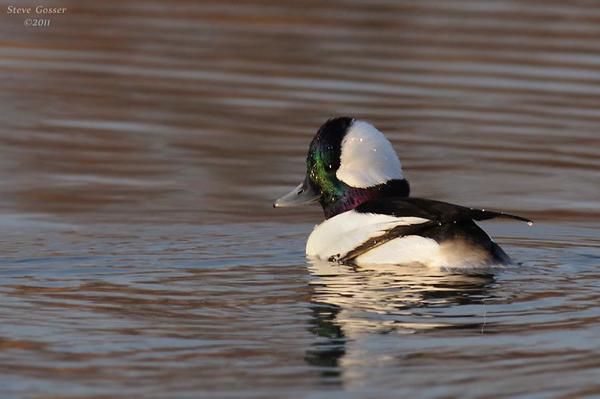
Identifying female buffleheads is tricky, though, because their black heads have a white splash on the cheek that resembles — at long distance — a male hooded merganser or a female ruddy duck.
The best clue to a female bufflehead is that she’s close to the males, as you can see in Steve Gosser’s photo at top.
While buffleheads look like large ducklings, ruddy ducks (Oxyura jamaicensis) are shaped like bathtub toys(*). At only 15 inches long they have big heads, thick necks and large slightly upturned bills. Just like rubber duckies they often cock their tails, especially when asleep.
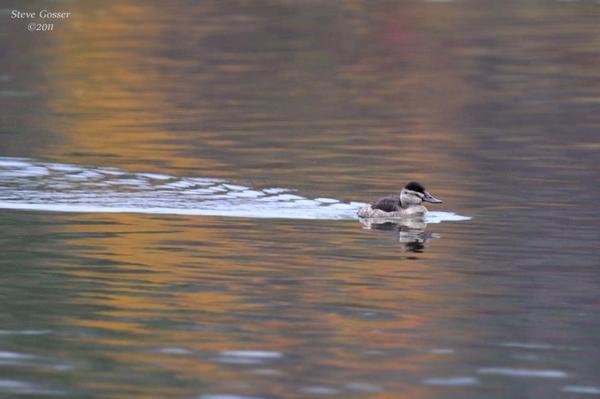
In November ruddies are less “ruddy” than in the breeding season but the male retains his white cheek.
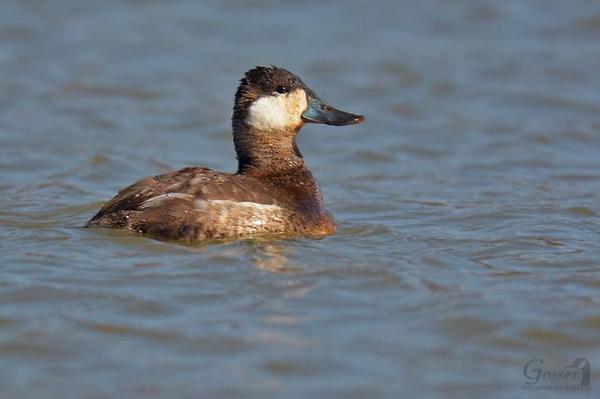
Females and juveniles have off white cheeks with a faint brown line.
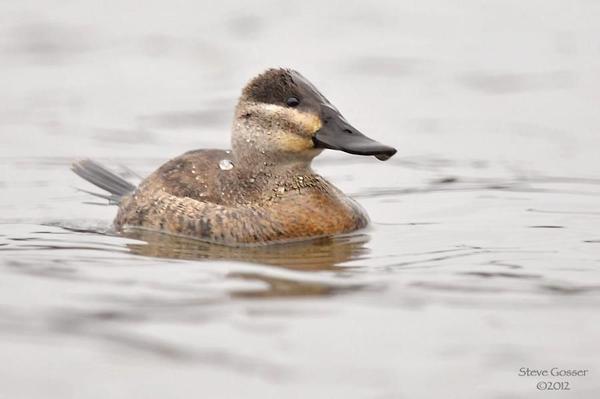
Though buffleheads winter as close to us as Ohio, neither species stays in Pittsburgh for the season. Stop by our rivers and lakes to see these ducks before they leave.
(photos by Steve Gosser)
(*) Descriptions adapted from Pete Dunne’s Essential Field Guide Companion, an excellent resource for birding.
I love your postings and Steve’s photos ; thanks for sharing !
Happy ten year anniversary. I have been following your blog now for about three years and look forward to reading it. Keep up the good work.